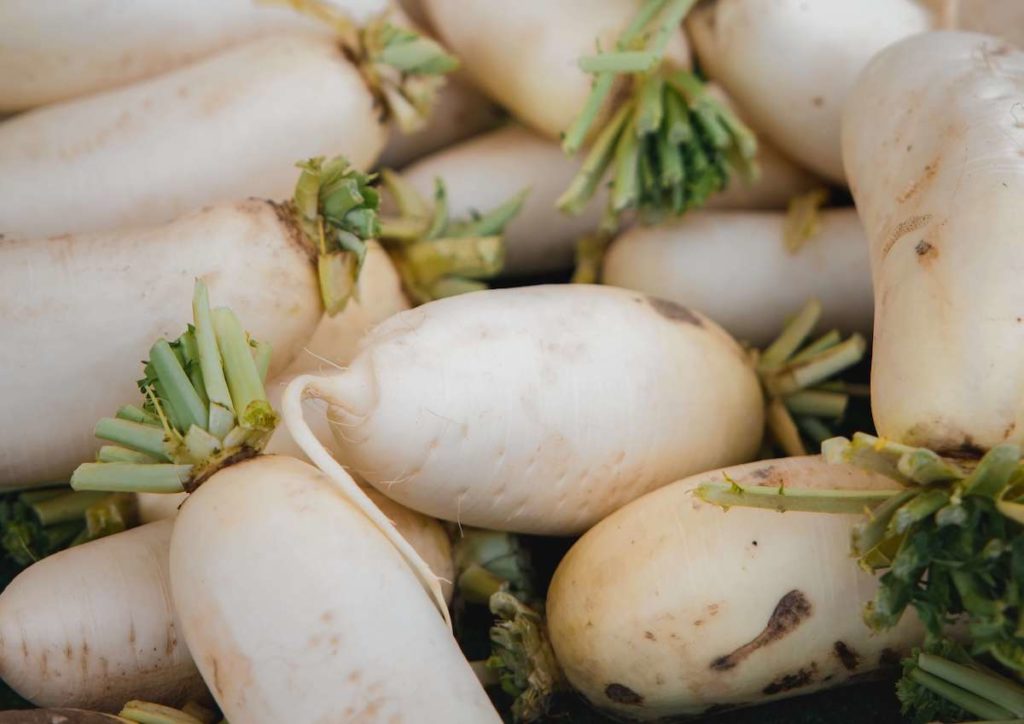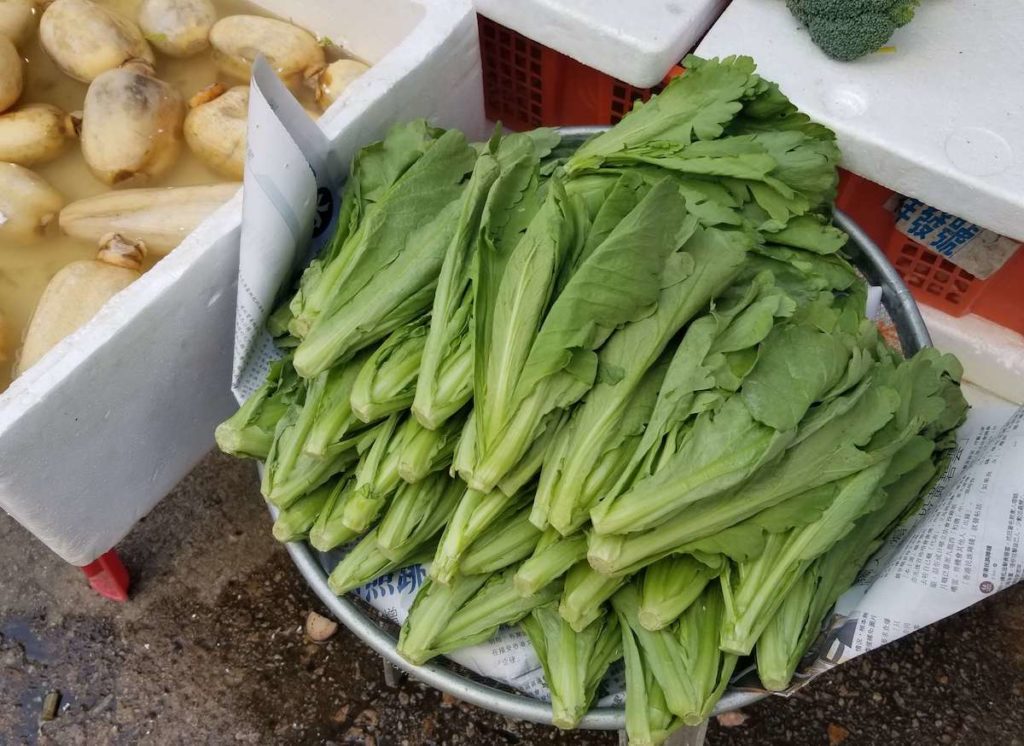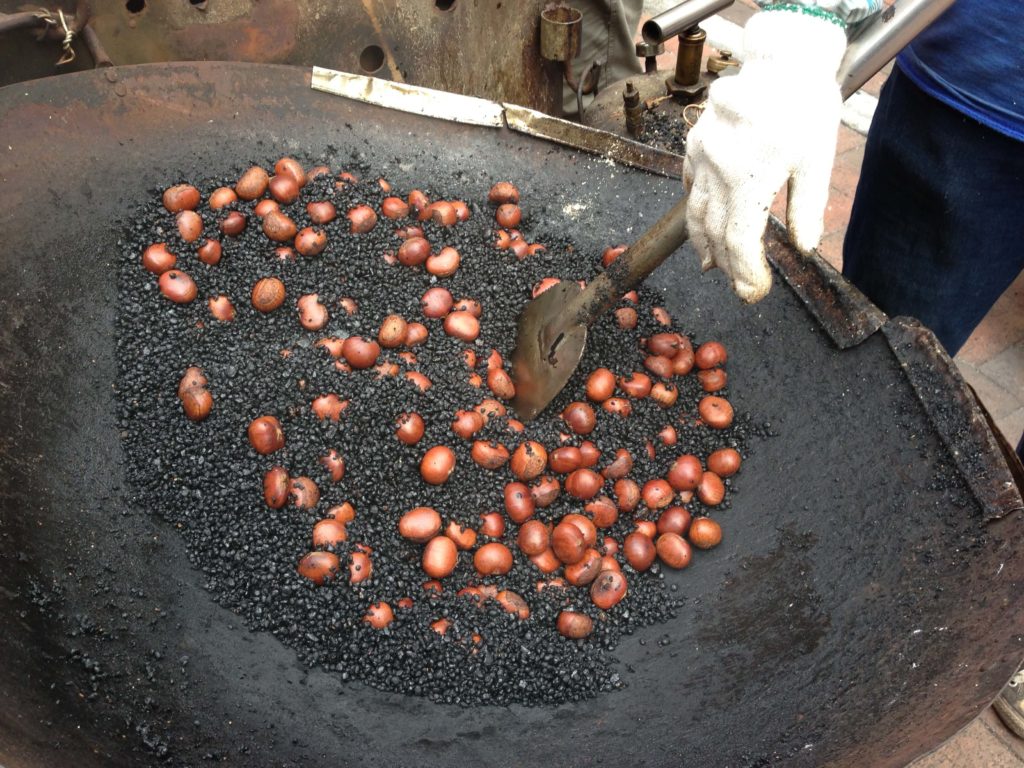In Traditional Chinese Medicine (TCM), food is seen as medicine that helps to balance and heal our bodies. In summer, sugarcane juice and bitter melon cool us down, while snake soup and lamb warm us up in fall and winter. Besides warming and cooling effects, foods have also been discovered to offer other benefits such as strengthening the kidneys and improving sleep quality.
We understand how difficult it is to figure out what foods offer what benefits, and when it is best to eat them. To help you get started on your wellness journey, we have put together a list of foods to eat in winter, with reference to the ancient wisdom of TCM.
1. Daikon radish

Daikon radish comes into peak season in winter, making them especially sweet and tender during the colder months. Besides tasting delicious, daikon radishes are also thought to bring our bodies great benefits when eaten during winter.
A Chinese saying goes, “Eat radish in winter and ginger in summer, and you won’t need a doctor to prescribe any medicine.” (冬吃蘿蔔夏吃薑,不用醫生開藥方). During the colder months, we tend to eat heavier foods to stay warm, which increases the accumulated heat in our bodies. The accumulated heat then causes various heat symptoms ranging from oral ulcers to insomnia, which are intensified when coupled with stress. In TCM, daikon radishes are considered a cooling food, equipped with the ability to balance the lingering heat that has accumulated in our bodies. These benefits, along with their sheer abundance in the winter, is why you will see daikon radishes in so many dishes across China during this season. Here in our city, Hong Kongers use daikon radishes in many winter foods, such as hot pot and radish cake – the Chinese New Year favorite.
Chinese New Year is fast approaching! Learn more about this important Chinese festival by checking out our blog posts. From how to greet your Chinese friends over Chinese New Year, to what the Chinese New Year’s Eve dinner is and what speciality puddings are eaten as part of Chinese New Year celebrations, we’ve got you covered.
2. Crown daisy
Also known as chrysanthemum greens and “tong ho” (茼蒿) in Cantonese, crown daisy is a leafy vegetable only available in winter. This is not a vegetable for the uninitiated – it has a unique peppery taste, and people either love it or hate it. Those who love it will cook it in hot pot and Cantonese lamb stew, or simply stir-fry them with minced garlic.
According to TCM, crown daisy has cooling effects and dispels the internal heat built up during winter from eating so many heavy foods. It also helps promote urination, relieve constipation and lower blood pressure. From a Western medical perspective, crown daisy is also extremely good for you, being packed with dietary fiber, beta carotene, vitamin C and vitamin K.
3. Lamb
If your hands and feet are always cold in winter, you may be experiencing Qi obstruction and poor blood circulation. To solve those issues, lamb might just be the remedy you need. Traditional Chinese medicine says that lamb helps to warm the body and improve blood circulation, making it one of the best foods to eat in winter. Aside from lamb, mutton and goat also have warming properties and can help you fight the winter chill.
Because of their warming properties, people across China love eating lamb, mutton and goat in the winter. Northerners prefer to serve lamb in hot pot, using few condiments to let its flavor shine, while Southerners prefer braising lamb, or more often – goat, with a slew of seasonings to mask its gamey taste. A Hong Kong winter favorite is Cantonese lamb stew (as pictured above), which is actually made with goat, despite its name.
4. Beef
If the gaminess of lamb puts you off, you might be glad to know that beef is considered to have warming properties in TCM as well. Besides keeping the body warm, beef also nourishes the spleen and stomach, strengthens muscles and bones, and resolves phlegm.
5. Dried longan
Longan, the juicy and sweet tropical fruit, becomes a quintessential ingredient of winter tonics when dried. Often steeped in hot water along with red dates and goji berries to make a nourishing winter tonic, dried longan helps to warm the body, calm the nerves, and improve sleep quality. Its high concentration of sugar makes it one of the sweetest foods to eat in winter. However, as with most warming (or heaty) foods, consuming too much dried longan tends to cause sore throat and sticky phlegm, so be sure to eat them in moderation!
6. Red dates
As mentioned, red dates, also known as jujubes, are commonly steeped in hot water to make a nourishing winter tonic. According to traditional Chinese medicine, red dates help to replenish and nourish the blood, thus improving circulation and digestion. Their warming effects also help in fighting the cold, making them one of the best foods to eat in winter. However, like dried longan, red dates can be quite heaty. Removing their pits before steeping them in hot water will lower their heatiness to make for a more balanced drink.
7. Chestnuts
In TCM, chestnuts pack a ton of benefits, from warming the body to strengthening the kidneys and improving blood circulation. As Chinese medical practitioners believe our kidneys need the most attention in winter, chestnuts are one of the best foods to eat in winter given their kidney-strengthening abilities. Moreover, chestnuts are in season during the colder months, meaning that they’ll taste best and be at their cheapest in winter.
During winter in Hong Kong, you will often see street hawkers roasting chestnuts by tossing them among searing-hot sand in a massive wok. Read more about this toasty, delicious winter street food here.
8. Wood ear
Wood ear is a dark brown fungus that grows on wood, especially edler. Slightly thicker than the more delicate “cloud fungus”, it is often used in hot and sour soup and spring rolls to add crunch and texture.
According to traditional Chinese medicine, wood ear improves digestion and blood circulation while strengthening the kidneys. These benefits make wood ear especially good for the winter, as we tend to eat heavier foods, experience cold hands and feet, and need to pay extra attention to our kidneys.
Want to learn more about what you should be eating each season? Check out our blog posts on what traditional Chinese medicine says you should be eating in fall and summer!









